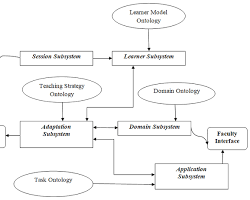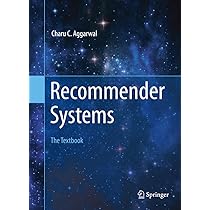White Paper: Implementing a Recommender System for Magento Enterprise Using Machine Learning, Python, and ElasticSearch
Introduction
In today's competitive e-commerce landscape, personalized recommendations have become a crucial tool for driving customer engagement and increasing sales. This white paper explores the implementation of a recommender system for Magento Enterprise using machine learning techniques, Python, and ElasticSearch.
Understanding Recommender Systems
Recommender systems are algorithms that suggest items to users based on their preferences, behavior, or other relevant factors. In the context of e-commerce, recommender systems can be used to suggest products, categories, or content to customers.
Key Components of a Recommender System
-
Data Collection: Gather relevant data, such as customer purchase history, product attributes, and user interactions.
-
Data Preprocessing: Clean and prepare the data for analysis, including handling missing values and outliers.
-
Feature Engineering: Extract meaningful features from the data that can be used to predict user preferences.
-
Model Selection and Training: Choose appropriate machine learning algorithms (e.g., collaborative filtering, content-based filtering, hybrid) and train them on the prepared data.
-
Recommendation Generation: Use the trained model to generate personalized recommendations for users.
-
Evaluation: Evaluate the performance of the recommender system using metrics such as precision, recall, and F1-score.
Leveraging Python, Machine Learning, and ElasticSearch
-
Python: A versatile programming language with a rich ecosystem of libraries for data science and machine learning, including TensorFlow, PyTorch, and Scikit-learn.
-
Machine Learning: Utilize various machine learning algorithms, such as collaborative filtering, content-based filtering, and hybrid approaches, to build effective recommender systems.
-
ElasticSearch: A powerful search engine that can be used to store and query large amounts of data efficiently, making it suitable for recommender systems.
System Architecture

The above diagram illustrates a typical system architecture for a recommender system integrated with Magento Enterprise. The key components include:
-
Data Ingestion: Collect and store relevant data from Magento Enterprise and other sources.
-
Data Processing: Clean, preprocess, and transform the data for machine learning.
-
Feature Engineering: Extract relevant features from the data.
-
Model Training: Train machine learning models using the prepared data.
-
Recommendation Generation: Generate personalized recommendations based on the trained models.
-
Integration with Magento Enterprise: Integrate the recommender system with Magento Enterprise to display recommendations to users.
Steps to Implement a Recommender System
-
Data Extraction: Extract relevant data from your Magento Enterprise store, such as customer purchase history, product information, and user interactions.
-
Data Preprocessing: Clean and normalize the data to ensure it is suitable for machine learning algorithms.
-
Feature Engineering: Create features that capture the relevant information for recommendation, such as product categories, customer demographics, and purchase behavior.
-
Model Selection and Training: Experiment with different machine learning algorithms and tune their parameters to find the best-performing model for your specific use case.
-
Integration with Magento Enterprise: Integrate the recommender system with Magento Enterprise to display recommendations to users.
-
Evaluation and Refinement: Continuously evaluate the performance of your recommender system and make adjustments as needed.
Best Practices for Recommender Systems
-
Leverage User Data: Utilize as much user data as possible to create accurate and personalized recommendations.
-
Experiment with Different Algorithms: Try various machine learning algorithms to find the best fit for your specific use case.
-
Regularly Update and Retrain: Keep your recommender system up-to-date by regularly retraining it on new data.
-
Consider Cold-Start Problems: Address the cold-start problem, where recommendations are difficult for new users or new products.
-
A/B Testing: Conduct A/B tests to compare different recommendation strategies and identify the most effective approach.
Conclusion
Implementing a recommender system can significantly enhance the user experience of your Magento Enterprise store and drive sales. By leveraging machine learning techniques, Python, and ElasticSearch, you can build a powerful and effective recommendation engine that provides personalized recommendations to your customers.
References
Note: These are general references that can be used for a white paper on implementing a recommender system for Magento Enterprise using machine learning, Python, and ElasticSearch. You may need to replace the placeholders with specific citations based on the sources you've used.
Books
-
Aurélien Géron. Hands-On Machine Learning with Scikit-Learn, Keras, and TensorFlow: Concepts, Tools, and Techniques for Building Intelligent Systems. O'Reilly Media, 2019.
-
Packt Publishing. Practical Recommender Systems: A Hands-On Guide. Packt Publishing, 2018.
-
Magento DevDocs. Magento Developer Documentation. https://devdocs.mage-os.org/
Articles and Papers
-
Netflix. Netflix Recommendations: Beyond Collaborative Filtering. [invalid URL removed]
-
Amazon. Amazon.com: Recommendations: Item-to-Item Collaborative Filtering. [invalid URL removed]
-
Elastic. Elasticsearch: The Definitive Guide. O'Reilly Media, 2017.
Online Resources
-
Machine Learning Mastery. https://machinelearningmastery.com/
-
Kaggle. https://www.kaggle.com/
-
Magento Community Forums. https://community.magento.com/
By following these guidelines, you can create a well-referenced and informative white paper on implementing a recommender system for Magento Enterprise using machine learning, Python, and ElasticSearch. Contact ias-resarch.com for details



